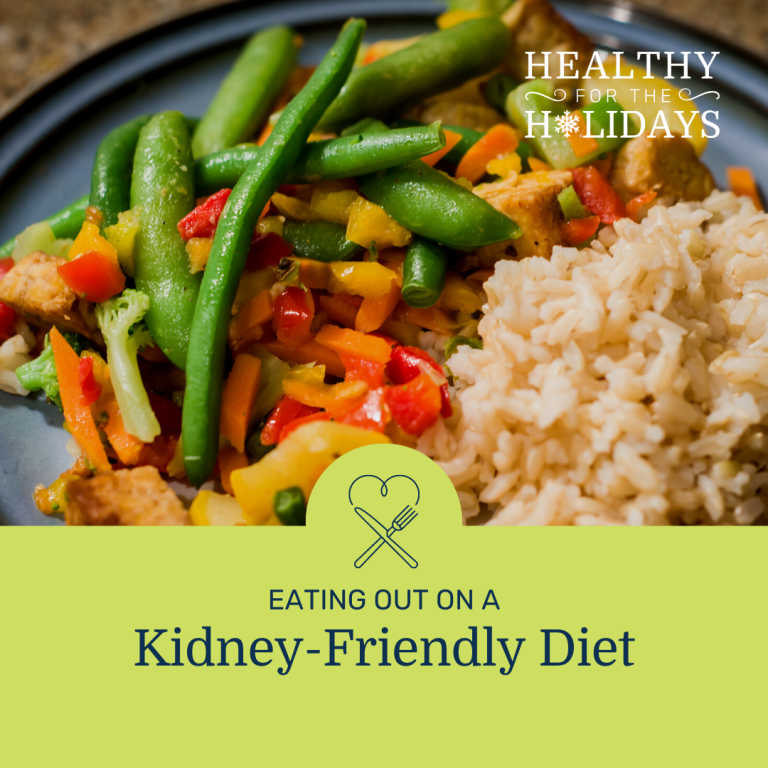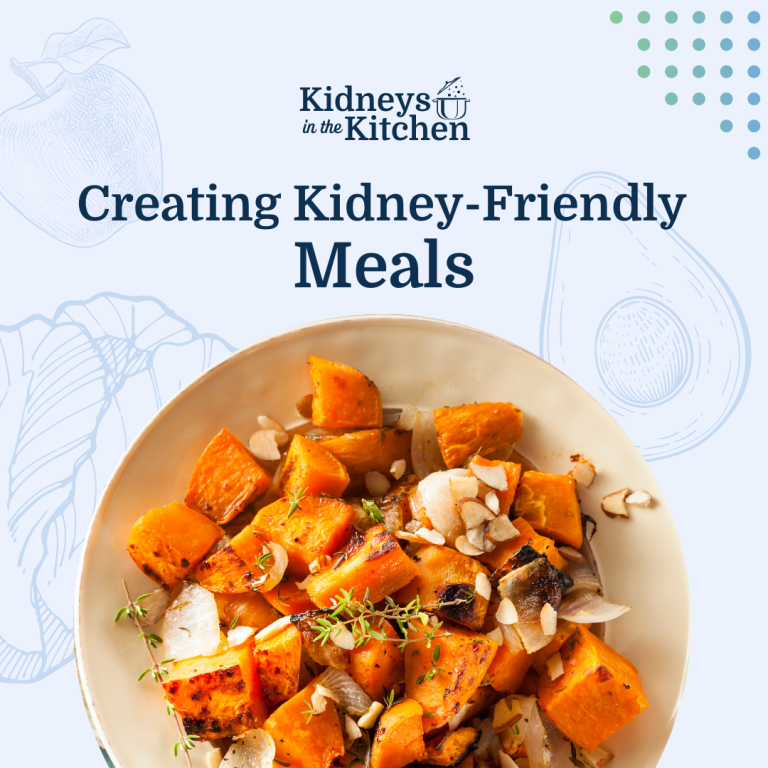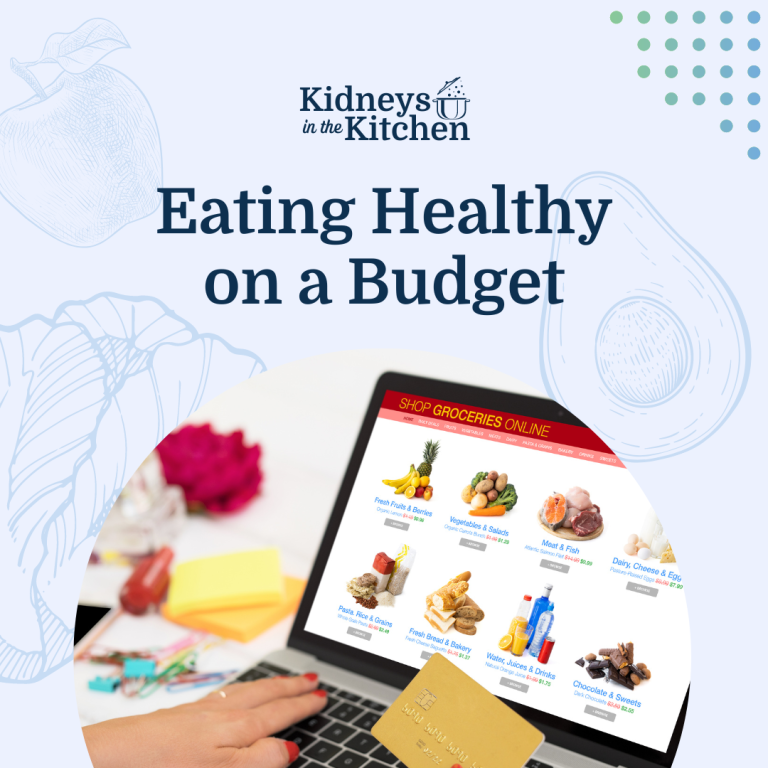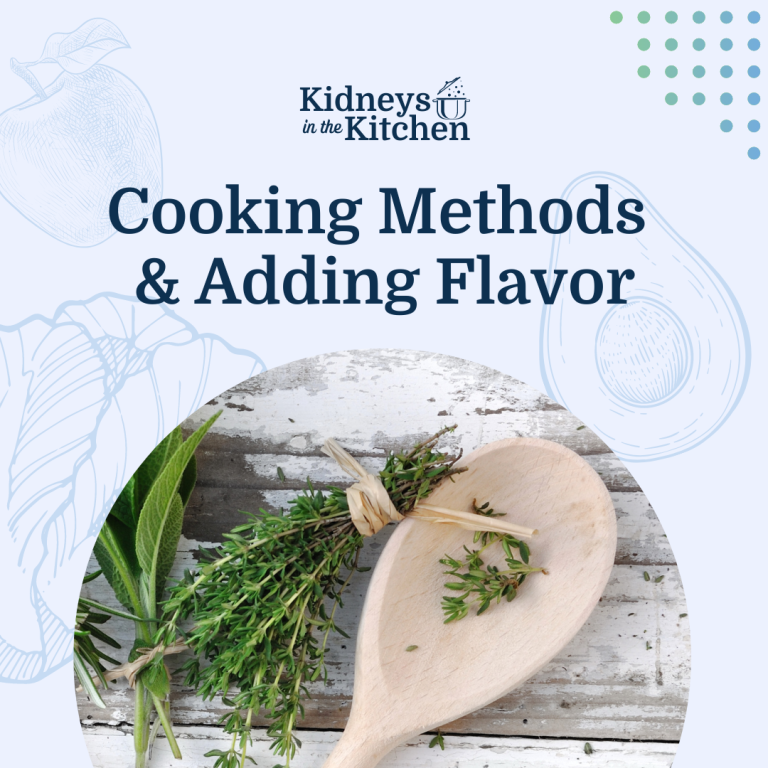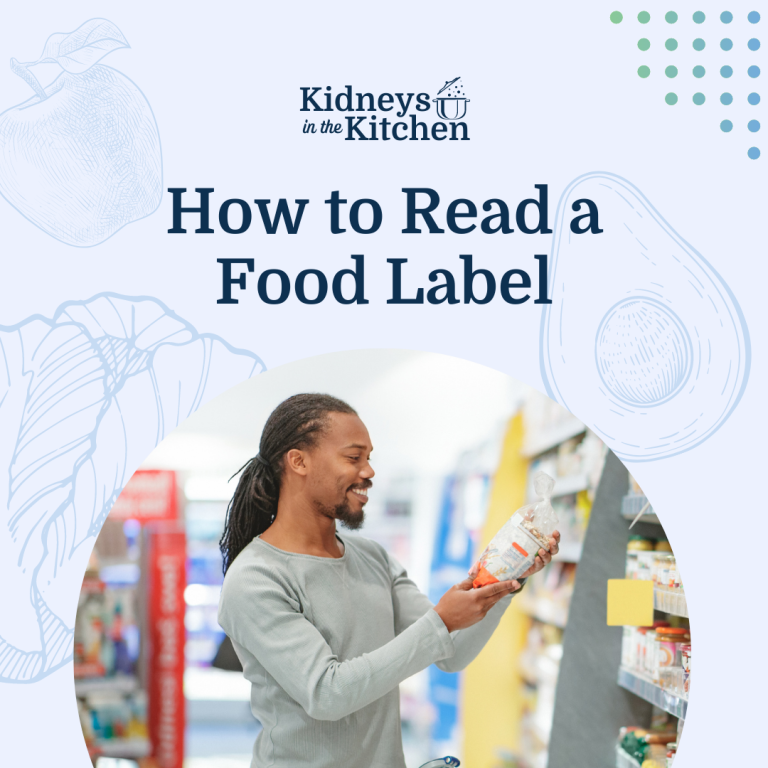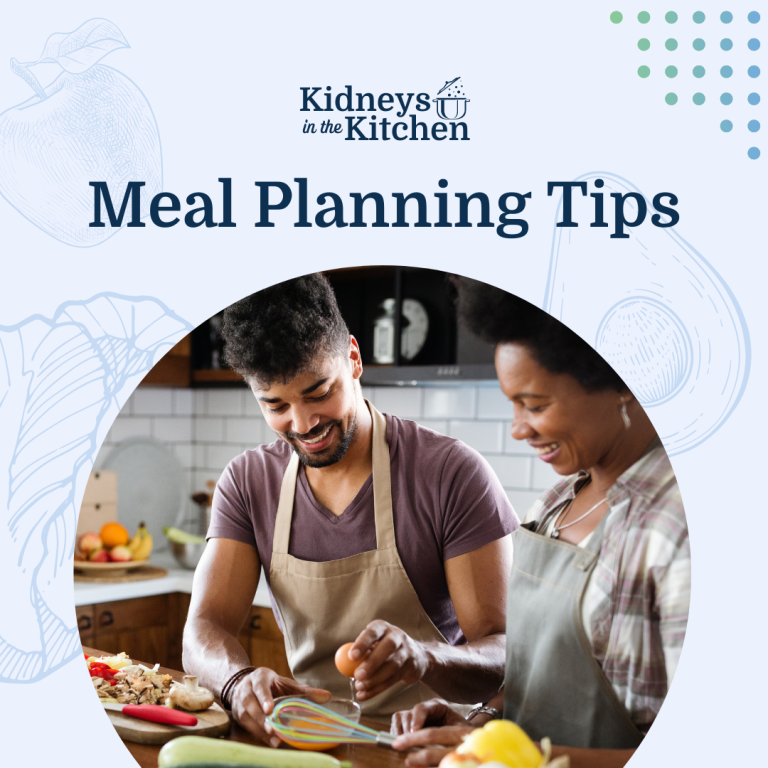CKD Cooking Techniques 101
You don’t have to be a gourmet chef to make delicious kidney-friendly meals!
Maintaining a kidney-friendly diet is important when you have chronic kidney disease (CKD). But that doesn’t mean you have to sacrifice flavor and variety!
You have far more control over what you eat when you cook meals at home. Let’s go over some useful cooking methods and tools that can help simplify meal preparation.
Here are some simple and quick ways to cook delicious food for your kidneys!
| Cooking Method | How It Works | Why Use It |
|---|---|---|
| Air Fry | An air fryer superheats air to cook with little or no fat. | Get crispy textures for chicken, meats, fish, and vegetables without the added fat. It’s fast, easy, and does not heat up your kitchen. |
| Poach | Poaching cooks food slowly and gently when you add it to simmering water, low-salt broth, juice, or wine. Note: Don’t let the liquid boil! | Fast, and food is juicy and tender, with lots of flavor. Poach chicken, fish, eggs, vegetables, or a fruit dessert (pears). |
| Pressure Cook | Steams food under pressure. Add water, put in food, and set the timer. Note: Some foods need more steps, like browning beforehand. | The pressure keeps flavor in the food. You can pressure cook foods from frozen, too. Great for shredded meats, stews, and hard-boiled eggs. |
| Slow Cook | Moist heat does the cooking. Low and consistent temperatures help foods stay tender and juicy during the cooking process. | Slow cooking at lower temperatures brings out the flavor in foods while preventing scorching/burning. Perfect for batch cooking and one-pot meals. Great for cooking tough cut meats, soups, and stews. |
| Grill | Dry heat cooking quickly sears the outside of foods, producing roasted and charred flavors and a nice crust. | Grilling is a great way to reduce fats when cooking. The possibilities are endless when it comes to grilling. Great for cooking meats, vegetables, and even fruits. |
| Roast | Hot (425°) air in the oven cooks food in a roasting or baking pan. Drizzle on olive oil and herbs before roasting. | Easy, and you get crispy edges and tender meat and vegetables. Fruits can also be roasted. |
| Boil | Boiling is a form of moist-heat cooking. Boiling occurs at 212° when food is completely covered in water and heat is evenly spread. | Great for cooking and softening meats and vegetables. Boiled foods maintain flavors well. |
| Sauté | High heat stovetop cooking with a bit of butter or oil. | Fast and tasty. Good for small or cut up vegetables or thin pieces of meat. |
| Stir-Fry | Very high heat cooking, with a bit of oil. Can be done in a wok or pan. Stir as you cook so food does not burn. | Fast and tasty. Cooks meat and vegetables evenly when cut into small pieces of the same size. |
| Steam | Hot steam cooks foods when you place them in a steamer basket or colander on top of a pan of boiling water and cover. | Fast and keeps in nutrients. Food is soft and moist. Good for fish, seafood, and hard vegetables like broccoli or carrots. |
| Microwave | Microwaves cause water molecules in food to vibrate, producing heat that cooks the food. | A quick, easy way to prepare and heat foods. Great for cooking a bag of frozen steamer vegetables or heating up leftovers. |
Somatus Dietitian Tip: Crockpots can be great for batch cooking and easy leftovers. Make several chicken breasts ahead to shred and use in salads, sandwiches, tacos and more!
Eat More Fruits and Veggies
Whether you’re roasting, grilling, sautéing, microwaving, or just eating them raw, there are tons of great ways to prepare fruits and vegetables. Here are a few ideas for adding more fruits and vegetables to your diet.
- Drizzle brussels sprouts and carrots with olive oil and seasonings, enjoy as a warm side dish or salad addition.
- Roast apples and peaches and top with yogurt, cinnamon, and a drizzle of honey for a healthy dessert option.
- Grill zucchini, eggplant, or peppers as a great addition to a sandwich or burger.
- Make a homemade vegetable soup in the slow cooker for an easy lunch or dinner.
Somatus Dietitian Tip: Keep an open mind and try a new vegetable each week! The more vegetables you try, the more variety and options you have in your diet!
Add Flavor With Spices and Herbs
Eating too much sodium (salt) with CKD can cause adverse effects like high blood pressure, swelling, thirst, shortness of breath, and heart issues. A great way to limit sodium in your diet is to replace salt in your dishes with herbs and spices, seasoning blends, or sauces without added salt.
Consider these alternatives!
| Seasoning/Flavoring | How to Use |
|---|---|
| Fresh herbs | Fresh herbs Use when roasting meats and vegetables. Add to sauces, stews, salads, soups, and dips. Suggested herbs: parsley, cilantro, basil, thyme, rosemary, chives, green onions. |
| Citrus | Use for dressings and marinades or for squeezing over cooked chicken or vegetables. Suggested citrus juices: lime, lemon, or orange. |
| Vinegar | Use for dressings and marinades or for adding flavor to cooked vegetables. Suggested vinegars: apple cider, balsamic, or red-wine vinegar |
Somatus Dietitian Tip: Look for powdered seasonings and avoid dried seasonings that end in “salt.”
Make Your Own Salt-Free Spice Blends and Salad Dressing

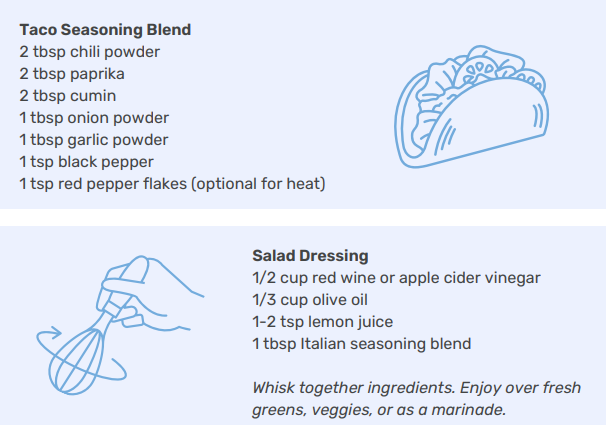
If your mouth is watering and you need to get to the grocery store NOW, make sure you check out our blogs on meal planning and how to read a nutrition label!
Want more Kidneys in the Kitchen info? Click here.
The information contained here is for educational purposes and is not intended to be a substitute for medical advice, diagnosis, or treatment. Always seek the advice of your healthcare provider with any questions you may have regarding a medical condition or treatment, and never disregard professional medical advice or delay seeking it because of something you read here.
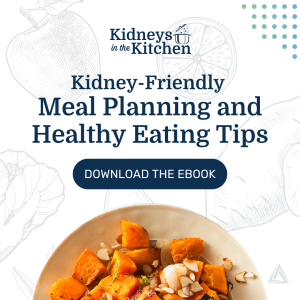
Learn more about the Somatus healthy living program.
We’re here to answer your questions anytime.
Call us at (855) 851-8354 (TTY: 711).
